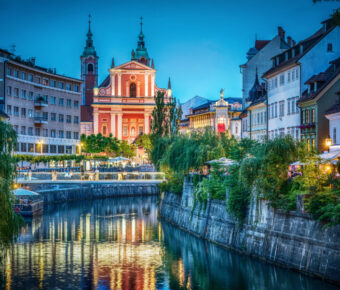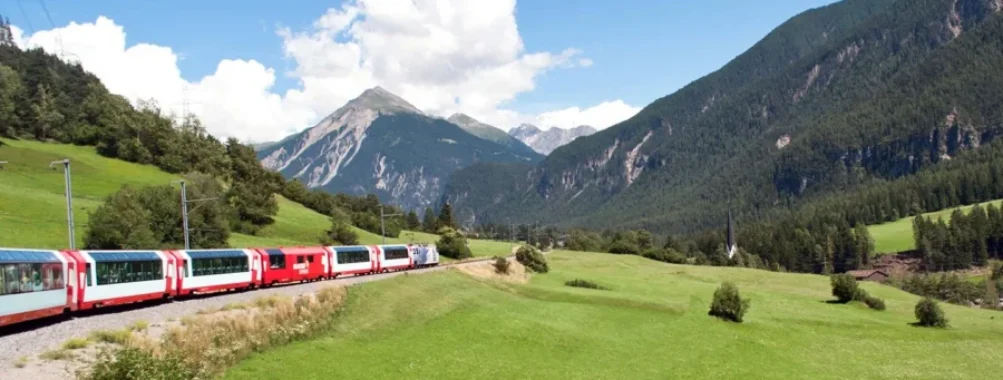
Eco-Friendly Overnight Train Routes Europe: 7 Hidden Journeys for Sustainable Travel This Year
Traveling through Europe by overnight train isn’t just about getting from point A to B while you sleep—you’re actually helping the planet, too. Eco-friendly night trains give you a greener, comfier way to wake up in a new city, all while shrinking your carbon footprint.
If you’re tired of airport chaos or just want to see something other than clouds on your journey, overnight trains have a lot to offer. You can hit major destinations, or, if you’re like me, you’ll find the routes that slip under the radar and dodge the crowds.
I’ve spent more nights than I can count rolling across Europe, sharing couchettes with strangers who somehow become friends, and waking up to views you just don’t get from a plane. There’s a real magic to stepping off a train as the sun rises over a city you’ve never seen—especially when you know you’ve made a responsible choice. Your wallet and the planet might just thank you.
Table of Contents
- Key Takeaways
- Understanding Eco-Friendly Overnight Train Routes in Europe
- What Makes Night Trains Eco-Friendly
- Environmental Benefits of Overnight Train Travel
- Comparison to Other Modes of Transport
- Popular Eco-Friendly Overnight Train Routes
- Brussels to Berlin: Crossing Borders Sustainably
- Vienna to Rome: Connecting Austria and Italy
- Munich to Zurich: Germany to Switzerland Sleeper Line
- Top Overnight Train Operators and Services
- ÖBB Nightjet: Europe’s Flagship Sleeper Trains
- European Sleeper: New Pan-European Routes
- EuroNight Trains: International Comfort and Connections
- Sleeper Train Accommodation and Comfort Options
- Choosing Between Private Compartments and Shared Cabins
- Couchettes and Reclining Seats: What’s the Difference?
- Onboard Facilities: Bathrooms, Amenities, and More
- Booking Tips for Eco-Friendly Night Trains
- Hidden Gems: Unique and Lesser-Known Routes
- Scenic Night Rides Through Central and Eastern Europe
- Trans-Siberian Influence: Europe-Asia Connections
- Maximizing the Eco-Friendly Night Train Experience
- Packing and Preparation for Overnight Journeys
- Travel Etiquette and Sustainability Tips
- Frequently Asked Questions
- What are the top-rated luxury sleeper trains for traveling across Europe?
- How do European sleeper trains contribute to sustainable travel?
- Can you provide a map detailing the routes of sleeper trains throughout Europe?
- What amenities are offered on the Caledonian and Nightjet sleeper services?
- What should travelers expect in terms of comfort and service on European overnight trains?
- Are there any sleeper train options in Europe that offer an authentic travel experience?
- Book Your Dream Experience
- More Travel Guides
Key Takeaways
- Overnight trains are an eco-friendly and comfortable way to explore Europe.
- You’ll find both famous and lesser-known sleeper routes worth checking out.
- I’ll share tips, operator details, and some personal insights to help you plan greener travel.
Understanding Eco-Friendly Overnight Train Routes in Europe
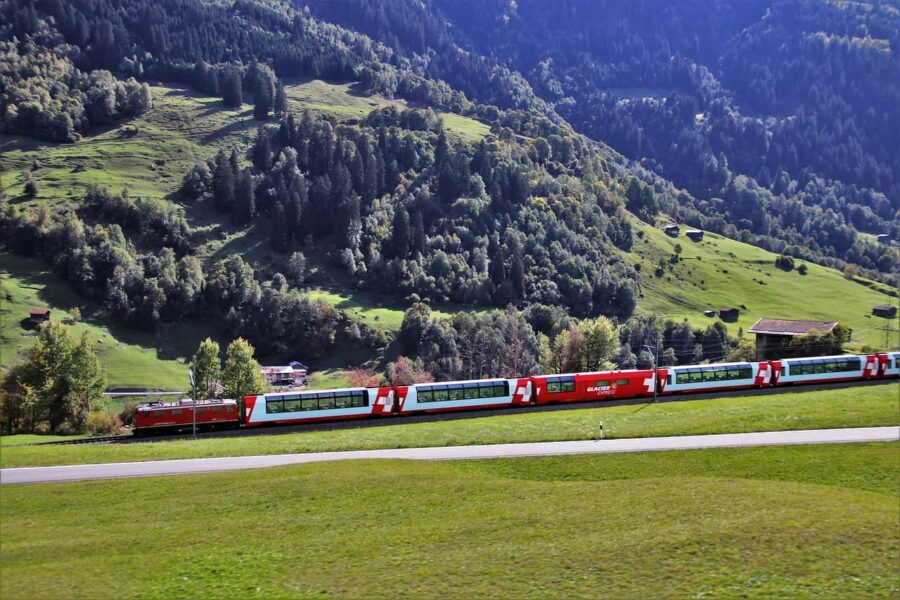
Eco-friendly night trains let you travel long distances across the continent without racking up a massive carbon footprint. You drift off at night and wake up somewhere new—no airport drama, no stress.
What Makes Night Trains Eco-Friendly
Most night trains in Europe run on electric locomotives. These use far less energy than flying or driving, and more and more countries are powering trains with renewables like wind and solar. Even if the electricity isn’t 100% green, trains just work more efficiently because they move so many people at once.
Night trains also cut down on waste in clever ways. Shared cabins, efficient heating and lighting, and constant updates to newer models all help keep energy use low. Unlike planes, you don’t have to overpack or check bags, so less energy goes into hauling unnecessary luggage.
Choosing a flight alternative like a night train lowers your environmental impact and makes your trip an adventure. I remember rolling through Switzerland, watching the moonlight spill over the Alps from my bunk—way better than staring out at clouds from a cramped seat.
Environmental Benefits of Overnight Train Travel
Night trains in Europe really hit that sweet spot between convenience and eco-friendliness. When you travel overnight, you skip the hotel stay, which saves energy and water. Pretty clever, right?
You also avoid airport security lines and transfers, so there’s less wasted time and fuel across the board.
Here’s a quick list of environmental wins:
- Lower emissions: Trains can emit as little as one-tenth the CO2 per passenger compared to planes.
- Efficient land use: Railways need less space than roads or airports.
- Less noise pollution: Electric trains are pretty quiet, especially compared to jets or highways.
From my experience, local towns really welcome train travelers more than busloads or flights. Supporting railways that invest in the planet and local communities just feels good.
Comparison to Other Modes of Transport
When you compare night trains in Europe to flying, buses, or driving, the differences jump out. Planes burn through fuel, even on short hops, and all that airport hassle just eats up your time.
With trains, the stations are right in the city center, so you step out and you’re in the action. Driving solo can’t compete with a train full of travelers, and even carpooling doesn’t match the efficiency of a public train.
Buses? They’re cheap, sure, but you end up stuck in traffic, breathing diesel, and honestly, sleeping on a bus is not my idea of a restful night. You’re basically trading sleep for a bargain ticket.
Hopping night trains feels more like an adventure than a chore. It’s not just about the eco-friendly alternative—it’s about making the journey part of the story.
Popular Eco-Friendly Overnight Train Routes
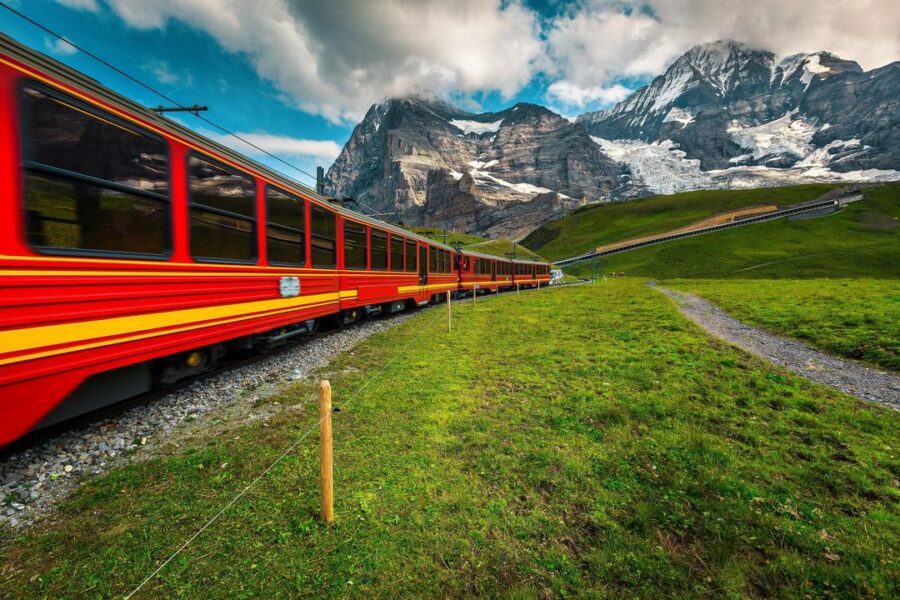
When you take a night train, you wake up in a different country, skip airport headaches, and save time. You also help reduce carbon emissions—trains use way less energy than planes or cars.
It’s honestly one of those rare ways you can scratch your wanderlust itch and still feel good about it.
Brussels to Berlin: Crossing Borders Sustainably
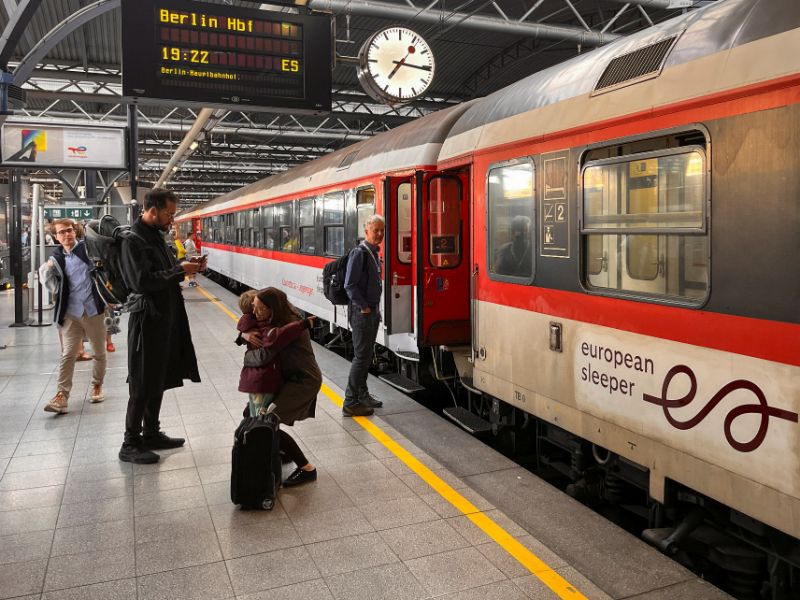
If you’re craving a classic cross-European adventure, the overnight train from Brussels to Berlin feels like something out of a grown-up storybook. This route connects two creative, buzzing capitals with a comfy sleeper train—and there’s something special about going to bed with Belgian chocolate and waking up to Berlin graffiti.
Nightjet usually runs this line, offering couchettes and sleeper compartments, so you can actually get some real sleep. I’ve ridden parts of this route and love watching city lights fade to fields, then seeing the first Berlin streetcars as the sun rises. Both stations are modern and easy to navigate, which is a huge relief if you’re lugging a suitcase.
Eco-conscious travelers will like that the train mainly runs on renewable electricity—so much better than the carbon punch of a budget flight.
- Starting city: Brussels, Belgium
- Arrival: Berlin, Germany
- Duration: Around 10 hours
- Highlight: Border crossing by moonlight, zero airport stress
Vienna to Rome: Connecting Austria and Italy
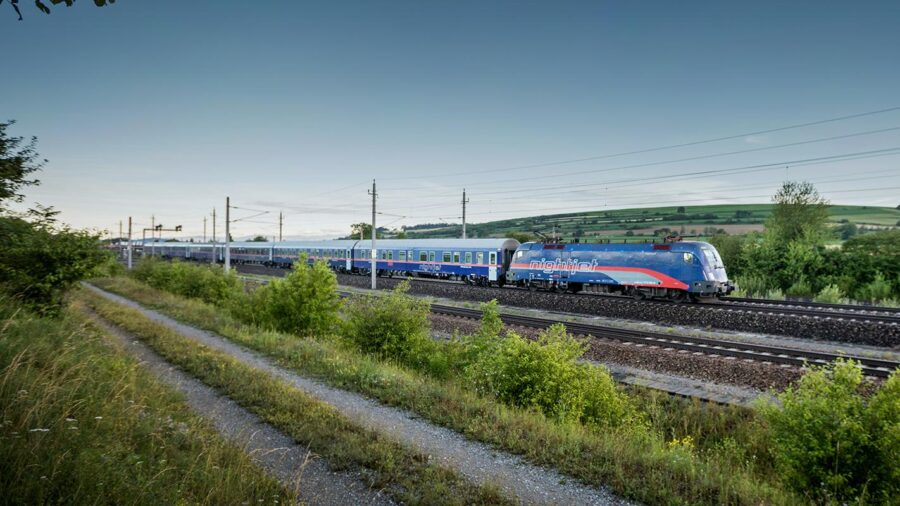
This one’s for the romantics and foodies dreaming of mountain views followed by pasta for breakfast. Vienna to Rome is a beauty—two totally different vibes, linked in one relaxed journey.
Nightjet glides overnight through Austria’s hills, across the Alps, and into the heart of Italy. Board in the evening, sip hot chocolate (or wine, honestly), and wake up rolling past Roman ruins.
I still remember cracking open my tiny compartment window at sunrise—there’s nothing like the golden light on the Italian countryside. If you love old-school travel with a modern twist, this is a must.
The direct sleeper train stops in cities like Florence and Bologna, so you’ve got options—spend your evening in Vienna’s coffee houses, wake up ready for espresso in Rome. This journey also means fewer emissions per passenger than flying.
- Starting city: Vienna, Austria
- Arrival: Rome, Italy
- Duration: About 14 hours
- Highlight: Alps at night, Roman dawn, skipping airport lines
Munich to Zurich: Germany to Switzerland Sleeper Line
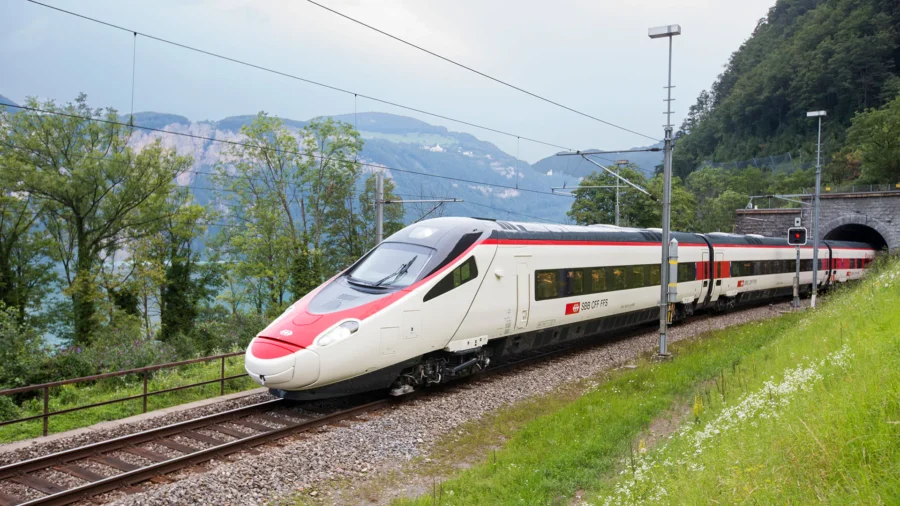
Munich to Zurich is the shortest of these three, but it’s perfect if you’re short on time or just want to dip your toes into cross-border train travel. I love this route when I need to escape to the Swiss lakes but don’t have the energy for a long day trip.
The route runs between Germany and Switzerland—both countries with strong reputations for sustainable travel and, if you ask me, some of Europe’s best stations. Trains are electric and super efficient; you’ll usually get a comfy seat or a small sleeper compartment, and the journey’s so smooth you might forget you’re moving.
Arrive in Zurich as the cafés open—perfect timing for a fresh croissant or a riverside coffee. For city-hoppers who hate airport hassle, this trip is easy to fit into any itinerary.
| Route | Start | End | Approx. Time | Standout |
|---|---|---|---|---|
| Brussels–Berlin | Brussels | Berlin | 10 hrs | Border crossing, big city vibes |
| Vienna–Rome | Vienna | Rome | 14 hrs | Alpine scenery, Italian sunrise |
| Munich–Zurich | Munich | Zurich | 4 hrs | Quick hop, perfect for short getaways |
Top Overnight Train Operators and Services
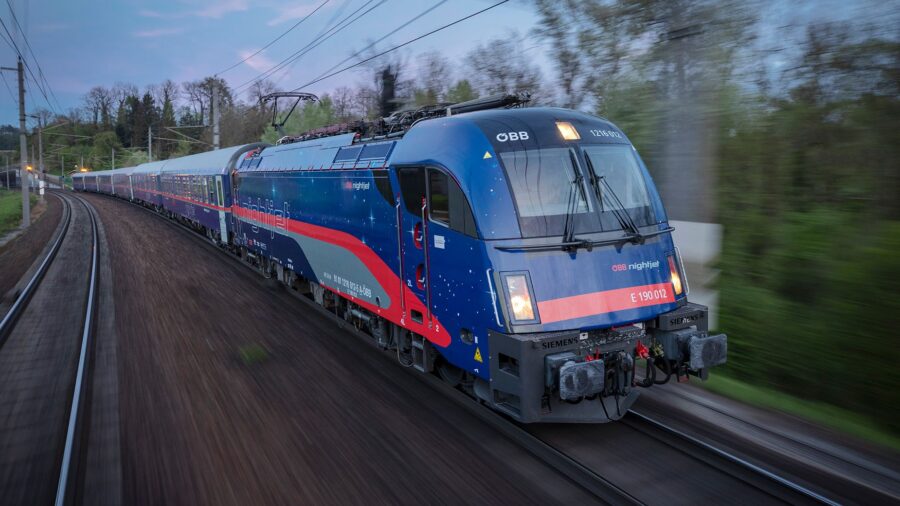
Taking an overnight train across Europe is more than just a way to get from city to city—it’s half the fun. You get a cozy place to sleep, wake up somewhere new, and skip the airport security lines.
ÖBB Nightjet: Europe’s Flagship Sleeper Trains
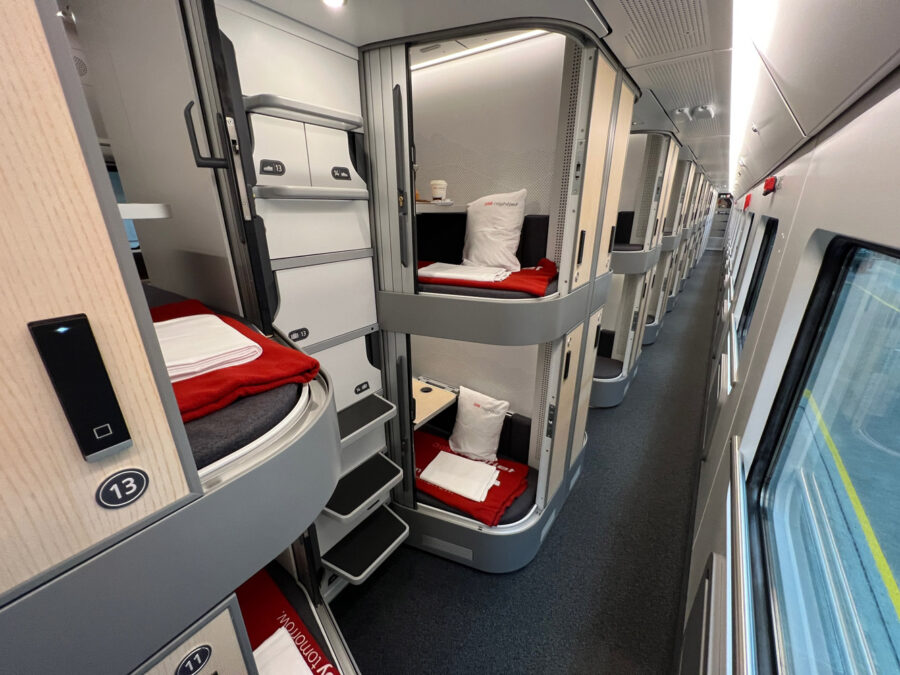
ÖBB Nightjet has become a favorite for travelers, and it’s easy to see why. Trains run between big cities like Vienna, Berlin, Paris, Zurich, and even Venice.
The routes connect well, so you can hop on in one country and wake up in another—minimal stress. Onboard, you’ll find regular seats, shared couchettes for groups or families, and small sleeping cabins for more privacy.
I always tell friends to book a sleeper if they can—it’s a world away from trying to nap upright. Nightjet’s commitment to eco-friendly practices stands out. They use modern engines to cut emissions and offer bike spaces for cycling fans.
If you’re curious, you can plan your route and see what’s possible by checking out popular train activities and day trips to add adventure to your stay.
European Sleeper: New Pan-European Routes
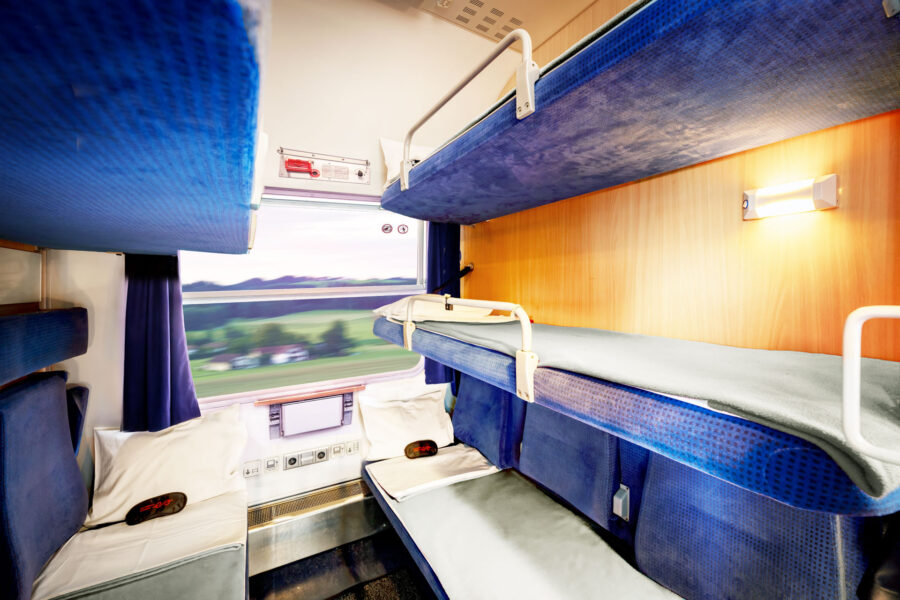
European Sleeper is a newer player, but it’s already shaking things up. Based in Brussels, the company runs services like Brussels–Berlin, and there’s talk of Prague next.
The vibe is “by travelers, for travelers,” and you’ll notice it in the details. I really appreciate their focus on green travel. Trains are efficient, avoid layovers, and your journey’s smoother and easier on the planet.
The cabins are simple but comfortable, and the prices are pretty reasonable. If you’re with friends or a group, this train makes it social but still relaxing.
Bring snacks, chill in shared spaces, or just stare out the window. The whole idea is to reimagine night trains for a new generation—and honestly, it’s working.
EuroNight Trains: International Comfort and Connections
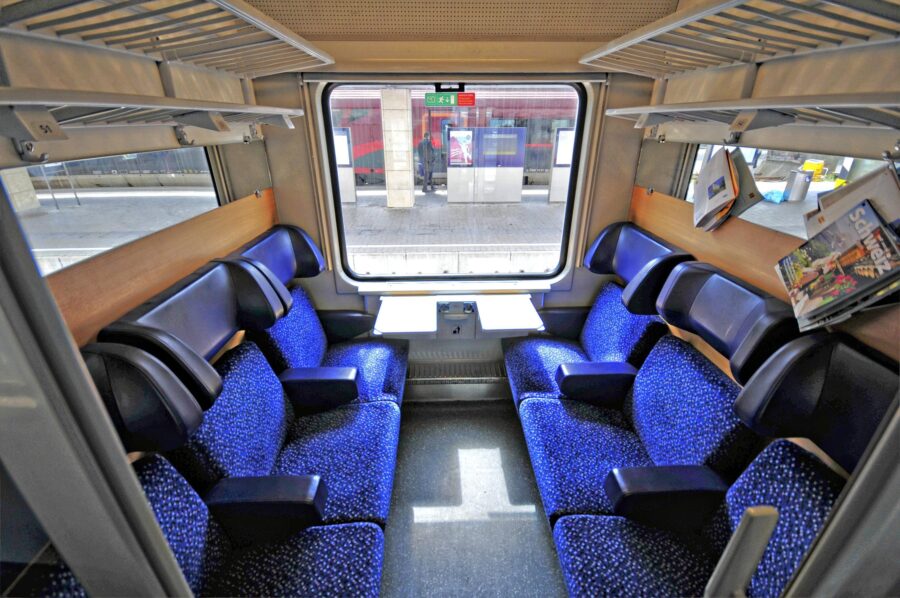
EuroNight trains have linked countries like Germany, Austria, Hungary, and more for decades. Companies like Deutsche Bahn, SNCF, and various Eastern European operators run these routes.
You won’t see flashy branding like Nightjet, but you’ll find classic sleeper carriages and reliable overnight service. Book a EuroNight route and you get comfort: private cabins, couchettes, sometimes even breakfast (though it depends—always check).
You can string together longer journeys across Central and Eastern Europe through connections. Some of my most memorable rides have been on these older sleepers—maybe not as modern, but there’s a certain charm to drifting off as the countryside slides by.
For anyone heading to or from the UK, the Caledonian Sleeper runs overnight between London and Scotland, which is a quirky twist if you want to expand your rail adventures.
Sleeper Train Accommodation and Comfort Options

Traveling overnight in Europe lets you skip airport stress, save money on hotels, and cut your environmental impact. Sleeper trains offer different ways to rest, from basic beds in shared cabins to private rooms with more privacy and perks.
When you’re booking your sleeper train, you face one of the classic travel dilemmas: private compartment or shared cabin? Private compartments definitely win for comfort, and you can lock the door. I’d say they’re perfect for couples, families, or anyone who doesn’t mind paying a bit more for peace and quiet.
There’s a certain magic to closing that door, tossing your bag on the seat, and pretending you’ve got your own rolling hotel room. It’s one of those small luxuries that feels bigger than it is.
Shared cabins save you money and can turn into a social experience, especially if you’re traveling solo. You’ll get your own bed—maybe a bunk—and probably meet people from all over. Most trains split shared options by men, women, or mixed groups, so you can pick what feels right.
Safety’s rarely an issue, and solo travelers or students tend to book these. If privacy tops your list, grab a private compartment early—summer gets competitive, and those sell out fast.
Chasing a deal? Shared cabins or open couchettes are way more affordable, and honestly, unless you’re next to a world-class snorer, you’ll still sleep fine. If you want to compare prices across different trains, European train tickets can help you spot what fits your budget.
Couchettes and Reclining Seats: What’s the Difference?
When you scroll through train seat maps, you’ll see “couchette” and “reclining seat.” Both let you lie back, but wow, the experience is night and day.
A couchette is basically a bunk in a shared compartment. Budget travelers love these. You get a thin mattress, pillow, blanket, and sometimes a sheet. Four to six people squeeze into a cabin, so forget privacy, but it beats sleeping upright. There’s this camaraderie—sometimes you’ll end up swapping stories, snacks, or just a sleepy nod with your bunkmates.
Reclining seats look like airplane seats that lean back a bit more. They’re cheaper than couchettes and sit in an open carriage. I’ve survived a night or two in one, but if you’re a light sleeper, don’t expect miracles. If you just need to get somewhere and cash is tight, it’ll work. Still, I’d spring for a couchette if you can, because a few hours of real sleep is worth a lot.
| Accommodation Type | Privacy | Comfort Level | Price |
|---|---|---|---|
| Private Compartment | Very High | Excellent | $$ |
| Couchette | Moderate | Good | $ |
| Reclining Seat | Low | Basic | $ |
Onboard Facilities: Bathrooms, Amenities, and More
Facilities can swing wildly depending on your route and train. On some newer trains—think Vienna to Venice—you might luck out with a private sink or even a bathroom in your compartment. Usually, though, bathrooms sit at the end of the carriage. Don’t expect luxury; it’s more “airplane toilet with elbow room.” I always pack my own soap and a few wet wipes, just in case.
Sleeper trains sometimes surprise you with little extras. You could get bottled water, a tiny breakfast, or a “welcome kit” with snacks and earplugs. I always pack my own snacks, a scarf for blocking light, and flip-flops for late-night bathroom trips.
You’ll find storage under beds or in racks overhead. Lock your big bags for peace of mind, though theft isn’t common. Many sleeper trains offer a dining car or at least a snack bar that stays open late—perfect for midnight cravings.
Booking Tips for Eco-Friendly Night Trains
Booking a sleeper train isn’t as simple as grabbing a regular ticket. If you have a Eurail pass, you still pay a reservation fee for a sleeper, and those go fast—especially on popular routes during holidays or festivals.
Decide early if you want private or shared space, since private compartments vanish quickly. You can book online or at most big train stations. For a greener ride, pick routes with modern, energy-efficient trains or fewer transfers.
Families, seniors, and youth sometimes get special discounts, so keep an eye out. A few new night train companies in Central and Western Europe are investing in cleaner energy, which is exciting if you care about your carbon footprint. Booking directly with the rail company is usually cheapest, but European train ticket sites let you compare options side by side.
Hidden Gems: Unique and Lesser-Known Routes
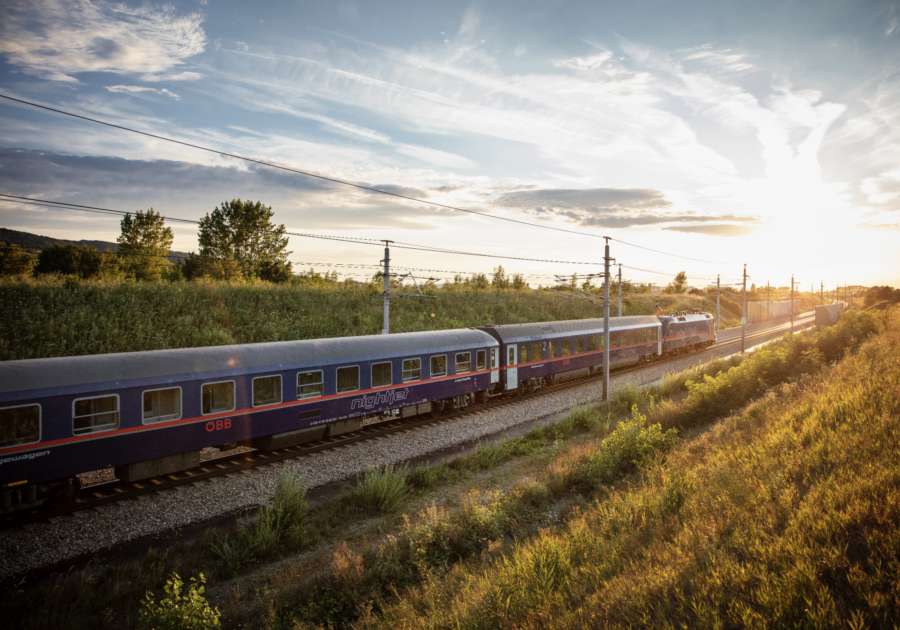
Some of Europe’s best overnight train journeys fly under the radar. If you crave eco-friendly adventures and quieter tracks, Central and Eastern Europe have some real gems.
Scenic Night Rides Through Central and Eastern Europe
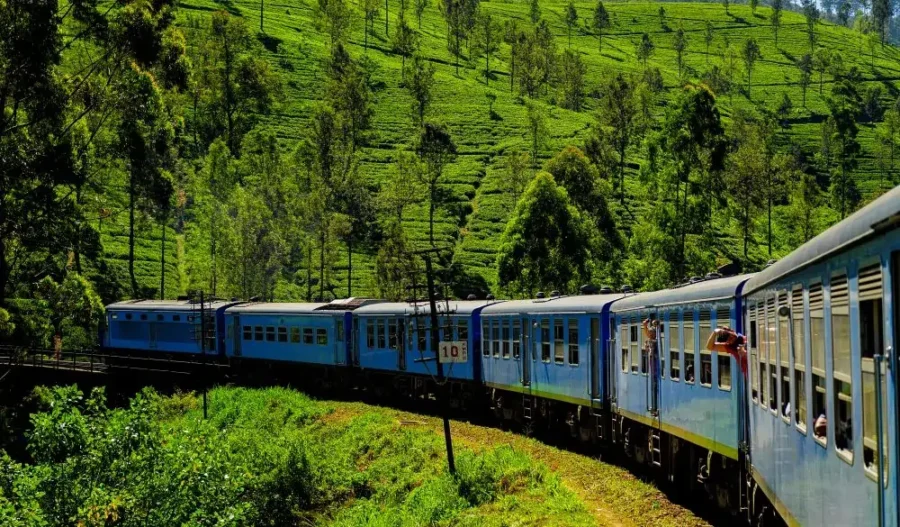
Sliding through countries like Poland, the Czech Republic, Slovakia, Hungary, Croatia, and Slovenia by night train is a treat most travelers overlook. These routes pass medieval towns, rolling hills, and even ancient amphitheaters if you hop off near Pula.
You barely notice the border crossings—half-asleep in your bunk, you’ll wake up somewhere totally new.
Some local favorites:
- Prague to Budapest: This overnight train crosses three countries, and the scenery changes dramatically by sunrise.
- Warsaw to Vienna: Travel from Poland to Austria, rolling past rivers and forests that never see bus tour crowds.
- Ljubljana to Zagreb: Easy to book, less crowded, and you get two capital cities that are still under the radar.
Booking these trains supports sustainable travel—trains have a much smaller carbon footprint than planes. You also skip airport hassles and arrive right in the city center.
Trans-Siberian Influence: Europe-Asia Connections
Everyone’s heard of the Trans-Siberian, but did you know its influence stretches into Eastern Europe? You can hop on connecting routes that echo the legendary journey, without vanishing into Siberia for a week.
Sleeper trains run between Moscow, Warsaw, and Budapest. The landscapes shift from European cityscapes to wild, open plains and dark forests—sometimes it really does feel like the edge of the world.
If you start in Poland or Hungary, you get eco-friendliness and a cultural blend that doesn’t feel manufactured.
For these longer trips, travel insurance is smart. Crossing multiple borders can get complicated if there’s a delay or luggage hiccup. I always get insured before a multi-country overnight—just makes it easier to relax. If you’re planning something like this, check out travel coverage options so you can just enjoy the ride.
Maximizing the Eco-Friendly Night Train Experience
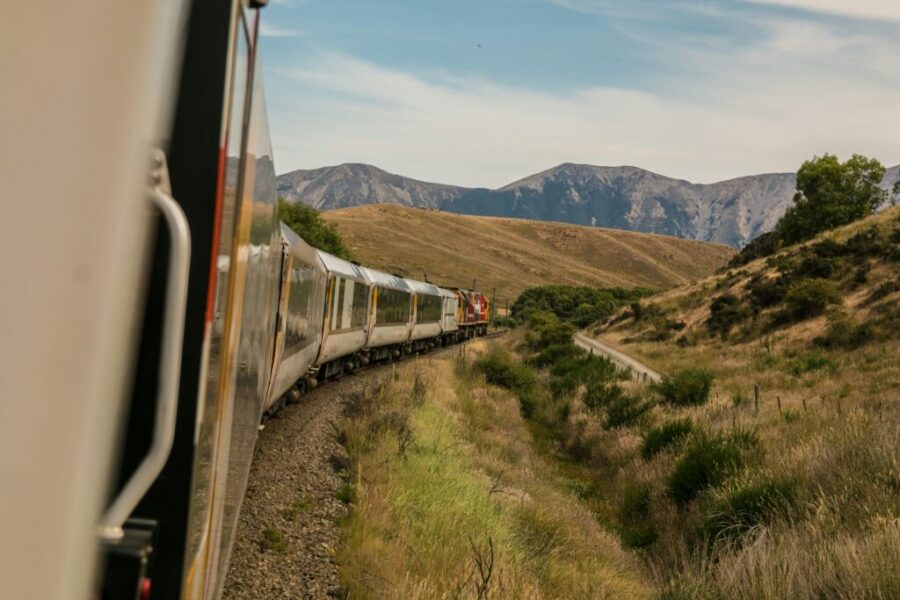
Getting the most out of a European sleeper train journey isn’t just about convenience. How you pack and act onboard matters for your comfort and the planet.
Thoughtful choices make the whole trip smoother and more sustainable for everyone.
Packing and Preparation for Overnight Journeys
Pack light—seriously, it saves so much hassle. A small, soft bag fits easily in tight spaces above or near your seat. Rolling luggage can be a pain on older trains with narrow aisles, so I stick with a backpack.
Bring a reusable water bottle and utensils. Some trains serve food, but it’s rarely zero-waste. Packing snacks in silicone bags or beeswax wraps cuts plastic and saves money. Earplugs and a sleep mask are game-changers in shared cabins, since hallway noise can be unpredictable.
Dress in layers—trains swing between stuffy and chilly, and there’s no way to predict if the heater will be blasting. If you like to plan, check specific routes and maybe book activities that fit your schedule by browsing organized tours.
Travel Etiquette and Sustainability Tips
Respecting shared space is huge on night trains. Keep shoes and bags out of walkways, and stash big luggage under seats or on racks—not on beds. A quick hello and a smile go a long way with cabin-mates. Who knows, you might even pick up a travel tip or a new friend.
One thing I learned the hard way: avoid loud conversations late at night. If you need to call someone, step into the vestibule or away from sleeping passengers. I use a tiny reading light with a soft cover to keep things dim after dark.
Take your trash off the train or use the recycling bins onboard—they’re not always obvious, but most new sleeper trains have them. Digital tickets cut down on paper. When everyone treats the train like a shared home, the journey feels better for all.
Frequently Asked Questions
Traveling on eco-friendly overnight trains in Europe isn’t just about getting from point A to B—it’s about the ride itself. Whether you’re eyeing luxury sleeper trains or quirky local journeys, these answers can help you plan a greener, more comfortable adventure.
What are the top-rated luxury sleeper trains for traveling across Europe?
If you want comfort and a bit of old-school flair, check out the Venice Simplon-Orient-Express or the Golden Eagle Danube Express. Both spoil you with stylish cabins, gourmet food, and attentive staff. It’s like stepping into a movie—just with better WiFi (sometimes).
Nightjet, run by Austrian Railways, isn’t as flashy but is a favorite for reliability and comfort, especially on longer routes like Vienna to Berlin or Amsterdam. The Caledonian Sleeper in the UK is cozy and the Scottish scenery is tough to beat.
How do European sleeper trains contribute to sustainable travel?
Overnight trains seriously cut down on road and air travel, which means fewer emissions. They pack in a lot of passengers and often run on electricity—sometimes from renewables. It’s not perfect, but it’s way better than a short-haul flight.
Every time you pick a sleeper over a plane, you’re reducing noise and air pollution. Even if you’re not a hardcore environmentalist, that’s a solid win.
Can you provide a map detailing the routes of sleeper trains throughout Europe?
I wish I could hand you a giant paper map right now, but there’s no single master map for every route. You’ll find good route maps on Interrail or Nightjet’s websites. They show the main lines connecting Paris, Vienna, Zurich, Budapest, and even Bucharest.
Honestly, part of the fun is tracing those lines yourself and imagining where you might end up.
What amenities are offered on the Caledonian and Nightjet sleeper services?
Nightjet offers bunks, private compartments, and basic single or double sleeper cabins with sinks. Some have private bathrooms if you’re willing to splurge. You get free bedding, a basic breakfast, and sometimes newspapers—usually in German.
The Caledonian Sleeper’s posh cabins have rainfall showers, local toiletries, and even room service if you want a midnight snack. On both, staff help with wake-up calls and keep things running smoothly, which is all you really want at 6 am in a new city.
What should travelers expect in terms of comfort and service on European overnight trains?
Don’t expect a five-star hotel, but you’ll find clean cabins, decent beds, and attendants who genuinely seem to care. I always notice it’s quieter than you’d imagine—a gentle rumble, some track noise, and most people settle in early.
The linen’s usually fresh, and there’s a relaxed vibe I’ve come to appreciate. Some trains look a bit dated, but honestly, that just gives them more character.
They’ll hand you a simple breakfast in the morning. Coffee somehow tastes better when you’re watching the sunrise roll by outside your window.
Are there any sleeper train options in Europe that offer an authentic travel experience?
Absolutely—if you want something real, look for local sleeper trains in places like Romania, Croatia, or Portugal. These aren’t the flashy, polished luxury lines; they’re a bit rough around the edges, but that’s where the magic happens.
You’ll find yourself surrounded by locals, hearing a jumble of languages, maybe sharing snacks or awkward laughs in the corridor as the train rattles through the night. One time, I hopped on a night train from Belgrade to Bar and ended up next to a retired fisherman.
He told me half his life story in a mix of broken English and wild hand gestures—honestly, I still think about that conversation. If you’re chasing that genuine, unpredictable travel experience, go for the smaller regional routes.
You might not get a perfect night’s sleep, but you’ll walk away with stories that stick with you long after the train pulls into the station.



